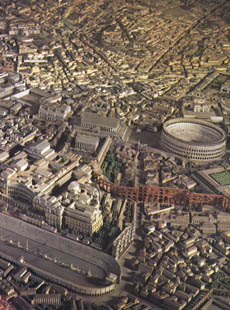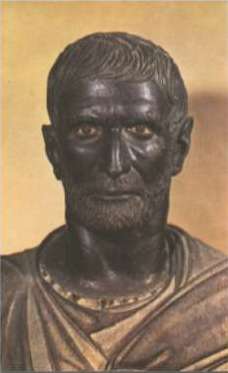Rome
The books listed below survey the history of Rome.
The difference between original evidence of Roman thought and later analysis and conjecture is significant. In this list, original Roman works are indicated by a solid bullet, modern works by a hollow bullet.
Modern Histories
- A Short History of Ancient Times by , Fingerhut Press. The best general treatments of Ancient history are given by P.V.N. Myers in his classic textbooks. My favorite is A Short History of Ancient Times, the most pedagogically sound introdution to Ancient History available, but it is also difficult to find. He also has other texts available that may be useful. You've got to hunt for them.
- A History of Rome by .
- A History of Rome, M. LeGlay.
- The Roman Revolution by . A classic on the first century BC.
- The Decline and Fall of the Roman Empire by . Read especially chapters 15 and 16, on the Christians.
- Cambridge Ancient History.
- The Oxford Classical Dictionary.
- Ancient Rome, History of a Civilization that Ruled the World by . A lavishly illustrated survey of ancient Rome, from its beginnings to end, covering the culture, religions, art, architecture, economy, politics and military. A large part of the book's value is its 350 full-color photographs, 45 maps and 30 full-color drawings.
- City, A Story of Roman Planning and Construction by . Illustrates the development of a typical Roman city, from initial survey to residence for fifty thousand citizens.
- Art History by Sandra Shaw. These lectures cover man's creation of art from the earliest stone-age beginnings through the late Roman empire, showing the function of art in human life, the evolution of art as man's cognitive abilities and sense of the world and his place in it developed, and, reflexively, Ms Shaw uses her experience as an artist and knowledge of Objectivism to look freshly at the evidence of art and make novel observations on the evolution of man's intellectual abilities and worldview.
Original Sources
- The Early History of Rome by .
- The Rise of the Roman Republic by .
- The Jugurthine War and the Conspiracy of Catiline by .
- Against Cataline by .
- A History of the Roman Empire by . Contains selections from Tacitus and Cassius Dio.
- The History of the Church from Christ to Constantine by .
Links
- Classics Resources – Nearly every significant resource for classicists can be found at or linked from this site sponsored by the University of Washington.
- Livius – Articles and photos on the subject of ancient history
- Roman Gladitorial Games – A summary of the history of gladitorial combat in Roman culture, with illustrations of the various types of combattants and their weapons and costumes.
- The Internet Classics Archive – 441 works of classical literature. Mainly Greco-Roman works (some Chinese and Persian), all in English translation.
- The Roman Emperors – An on-line encyclopedia on the rulers of the Roman empire from Augustus (27 BC-AD 14) to Constantine XI Palaeologus (1449-1453).
Credits
- For suggestions of many of the books that appear here (Thanks, John!): John Lewis, Formerly, Visiting Associate Professor of Political Science, Duke University
Contact:
StrongBrains.com
copyright © 2024 Andrew Layman, all rights reserved, 1/15/2024 6:09:21 PM, Topic: Rome, http://www.strongbrains.com

